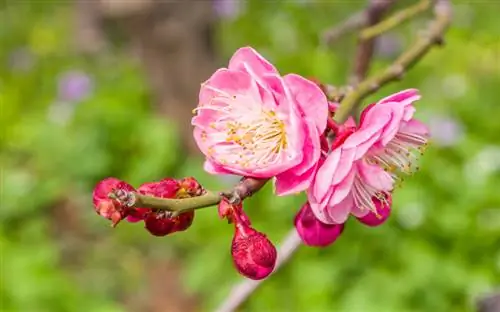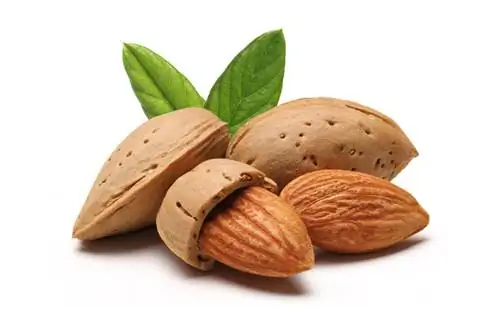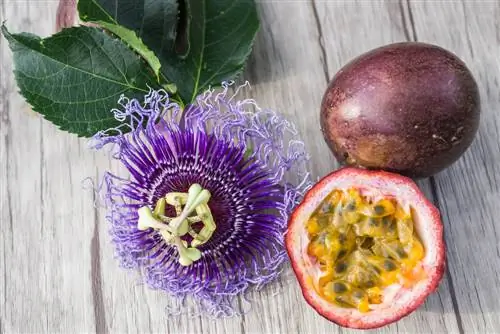- Author admin [email protected].
- Public 2023-12-16 16:46.
- Last modified 2025-06-01 06:02.
Lightnut trees are planted from New Zealand to India. The trees bear drupes, the kernels of which are known as kemiri nuts. The fruits are still relatively unknown in Germany. In Southeast Asia they are valued for their flavor-enhancing effect and as an additional source of light.

What is a kemiri nut and what is it used for?
The kemiri nut is a stone fruit of the candlenut tree that is widespread in Southeast Asia. It has a sweet, nutty taste and is used as a flavor enhancer, spice, lamp oil and base for cosmetics. It is poisonous raw, but roasting makes it edible.
Not a nut but a stone fruit
The kemiri nut is not - as the name suggests - a nut, but a stone fruit that grows on the candlenut tree. It grows up to five centimeters long and has a spherical shape.
It is often confused with the macadamia nut because it looks similar and is also very large. But the two fruits have nothing else in common with each other.
Under the dark shell is the whitish pulp, in which two seeds, the kemiri nuts, are embedded.
This is what the kemiri nut tastes like
The taste is described as sweet with a nutty undertone. Due to the high fat content, the fruit has an unpleasant, oily aftertaste.
Uses of the kemiri nut
The seeds can be used for more than just a seasoning or snack. They contain a lot of oil. The fruits can be lit and then serve as a substitute for a lamp. This usage also explains the name of the tree.
In Indonesia, kemiri nuts are primarily used to thicken dishes. The fruits can be used for many purposes:
- Flavor enhancers
- Spice with a slightly nutty taste
- Oil production (kukui nut oil]
- Snacks made from the pressed remains of the kernel
- Lamp oil
- Soap
- Home remedies for skin diseases
- Light laxative
- Foundation for cosmetics
The candlenut tree - a spurge plant
The candlenut tree is an evergreen tree that can reach a height of 20 meters. Its broad treetop is striking. The leaves can be up to 25 centimeters long.
Can kemiri nuts be grown in Germany?
Lightnut trees thrive in tropical climates up to an altitude of 1,200 meters. They love warmth and cannot tolerate frost.
In Germany the climatic conditions are therefore not suitable for planting these trees. At best, candlenut trees can be kept in the greenhouse.
However, the use of the fruits has not yet become established here.
Tips & Tricks
Raw kemiri nuts are poisonous because of their hydrogen cyanide content. If eaten raw, the seeds cause severe abdominal cramps, vomiting and diarrhea. Roasting neutralizes the poison and the fruit can be made into a snack or ground as a spice.






